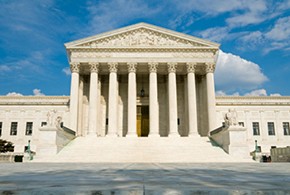Church-state borders

In a rigorous college course on constitutional law I studied and discussed landmark decisions handed down by the U.S. Supreme Court. I learned that American democracy is a work in progress and that the nature of the nation and culture at any given moment is in part a product of the thinking of the nine justices. The Supreme Court was created to provide a balance to the power and authority of Congress and the president, and in theory it transcends political partisanship.
The reality, however, is that the court reflects the politics of the moment, and in particular the opinions and convictions of the president who appointed the individual justices and of the legislators who confirmed their appointment. The Supreme Court is so important politically that FDR tried, unsuccessfully, to increase its size so that he could pack the court with justices amenable to his New Deal goals.
The current court is dominated by five Roman Catholic men who were appointed by Republican presidents. In a review of several new books on the Supreme Court, Jeff Shesol observes the rightward tilt of the current court in its conservative rulings on campaign finance, affirmative action, gun control, abortion, and religion in the public sphere (New York Times, July 2).




